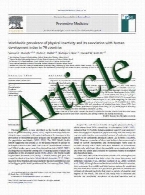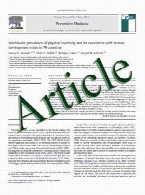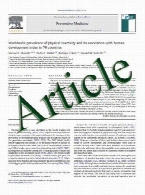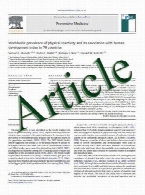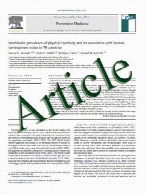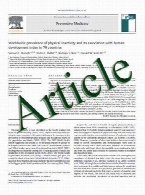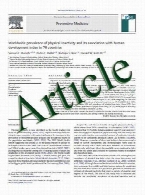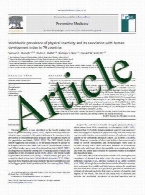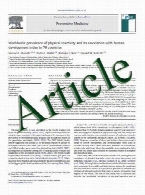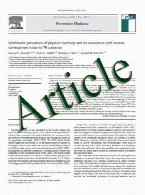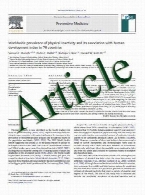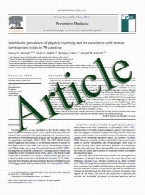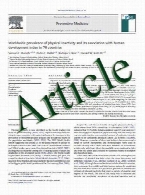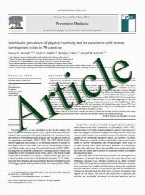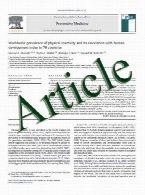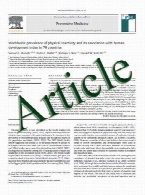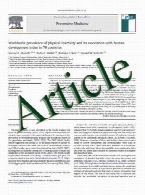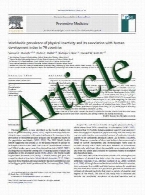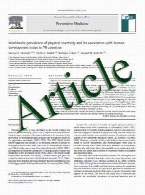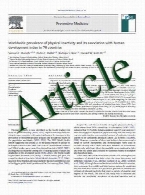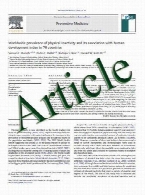

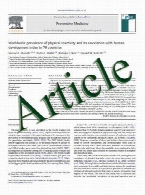
Epigenetics and Hypertension
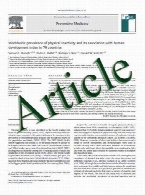
Obesity and the Kidney
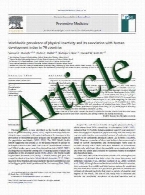
Point-of-Care Testing
Renin and Prorenin Receptor in ...
The (pro)renin receptor, PRR, was initially characterized as a component of the renin-angiotensin system (RAS). PRR-bound renin and prorenin display ...
Dual-Acting Angiotensin Recepto ...
Lowering blood pressure by pharmacologic intervention reduces the incidence of cardiovascular events. Nevertheless, despite the widespread availabil ...
The DASH Diet and Insulin Sensi ...
Lifestyle modifications, including adoption of the Dietary Approaches to Stop Hypertension (DASH) dietary pattern, weight loss in individuals who ar ...
Metabolic Syndrome: From the Ge ...
The metabolic syndrome (MS) constitutes a combination of underlying risk factors for an adverse outcome, cardiovascular disease. Thus, the clinical ...
Genetics of Salt-Sensitive Hype ...
The assessment of salt sensitivity of blood pressure is difficult because of the lack of universal consensus on definition. Regardless of the variab ...
Genetics of Hypertension and Ca ...
Blood pressure (BP), hypertension (HT) and cardiovascular disease (CVD) are common complex phenotypes, which are affected by multiple genetic and en ...
Catecholamine Storage Vesicles: ...
Hypertension is a complex trait with deranged autonomic control of the circulation. The sympathoadrenal system exerts minute-to-minute control over ...
Dietary Fructose and Hypertensi ...
The association between fructose and increased blood pressure is still incompletely defined, because experimental studies have produced dissimilar c ...
Epigenetics and Hypertension
Epigenetics refers to mechanisms for environment– gene interactions (mainly by methylation of DNA and modification of histones) that do not alter th ...
Endogenous Ouabain: A Link Betw ...
The sodium pump, an ancestral enzyme with conserved ability to bind ouabain, plays a key role in salt conservation and is regulated by aldosterone a ...
Obesity and the Kidney
Background and objectives Obesity-related glomerulopathy (ORG) is an increasing cause of end-stage renal disease, but evidence concerning the effect ...
Combination HIV Prevention: Sig ...
No single HIV prevention strategy will be sufficient to control the HIV pandemic. However, a growing number of interventions have shown promise in p ...
Pathogenesis of HIV in the Cent ...
HIV can infect the brain and impair central nervous system (CNS) function. Combination antiretroviral therapy (cART) has not eradicated CNS complica ...
Coreceptors and HIV-1 Pathogene ...
The major HIV-1 coreceptors, CCR5 and CXCR4, mediate virus entry into CD4+ cells and are therefore a critical component of the HIV-1 life cycle. Al ...
Point-of-Care Testing
The availability of rapid, point-of-care (POC) tests has significantly expanded the capacity of both developed and resource-constrained countries (R ...
Alterations of the B-Cell Respo ...
While the hallmark of HIV-1 infection is the progressive depletion of CD4+ T cells, extensive B-cell dysfunction ensues that impairs the quality of ...
Revisiting Immune Exhaustion Du ...
Chronic immune activation is a hallmark of HIV infection, yet the underlying triggers of immune activation remain unclear. Persistent antigenic stim ...
IL28B Polymorphisms and Treatme ...
Recently, single-nucleotide polymorphisms near the IL28B gene have been identified as important in predicting treatment response and spontaneous cle ...
Rational Guide to the Use of Er ...
Hepatitis C virus (HCV) infection is the leading reason for liver transplant in North America. Combination therapy with pegylated interferon and ri ...
Management of Hepatitis C Antiv ...
Hepatitis C is one of the leading causes of liver disease in the United States, affecting more than 4 million individuals. The current treatment reg ...
HCV Eradication: Implications f ...
Hepatitis C virus (HCV) is a leading cause of liver-related death worldwide. The evolution of hepatitis C therapy has made serologic eradication of ...
Update on Current Epidemiologic ...
Hepatitis C virus infection remains a leading cause of liver disease worldwide and is currently the principal reason for liver transplantation in th ...
Extrahepatic Manifestations of ...
Hepatitis C virus (HCV) is the most common blood-borne infection in the United States and is a leading cause of chronic liver disease worldwide. Ext ...
HCV Response-Guided Therapy: Sh ...
The treatment of chronic HCV has traditionally been for a fixed duration based on genotype. We now recognize that patients respond to treatment alon ...
The Emerging Role of Histone De ...
T-cell lymphomas are an uncommon and heterogeneous group of non-Hodgkin lymphomas. Historically, therapies for these diseases have been borrowed fro ...

